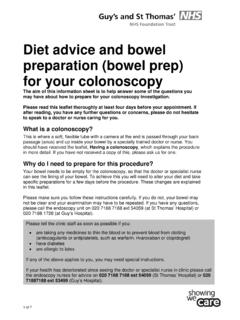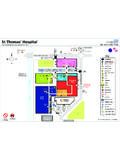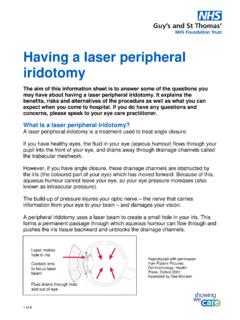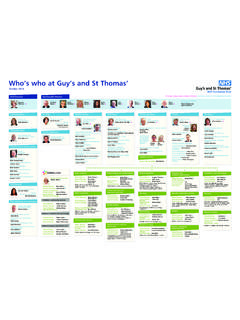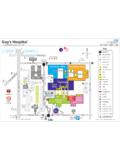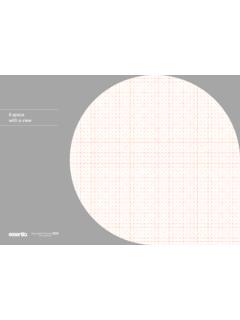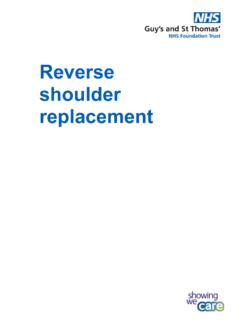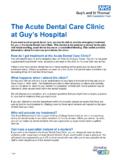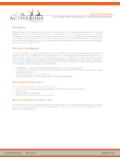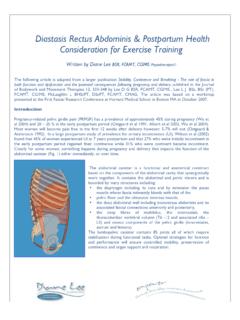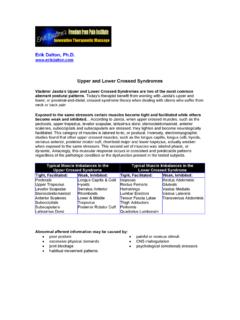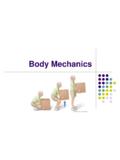Transcription of Divarication of rectus abdominis muscles (DRAM) …
1 Divarication of rectus abdominis muscles (DRAM) postpartum This leaflet explains what DRAM is and how physiotherapy can help in its management. If you have any further questions or concerns, please do not hesitate to contact the women s health physiotherapy team contact details are at the end of this leaflet. What is DRAM and why do I have it? For some women, pregnancy can cause abdominal separation also called diastasis recti. It is a condition where the right and left sides of the rectus abdominis , the so called six-pack muscles , spread apart at the stomach midline (the linea alba). The image used with kind permission of MuTuSystem Limited During pregnancy, your abdominal muscles will separate anyway.
2 This is due to the growth of the baby in the uterus pushing against the abdominal wall, and pregnancy hormones that soften connective tissue. Separation can occur any time in the last trimester but is most problematic after pregnancy when the abdominal wall is weak. If your abdominal muscles remain weak, you are more likely to suffer from back pain and have an increased risk of a hernia. This is because the abdominals are important in supporting your back. 1 of 3 2 of 3 Do I need any tests to confirm the diagnosis? Most pregnant woman will have a small separation of one to two fingers width after pregnancy and this is not a problem. However, if the gap at your midline is more than two fingers width and has a visible bulge, you may have a DRAM and need to see a physiotherapist.
3 You can measure this using your fingers. What treatments are available? Physiotherapy treatment is available and your GP or midwife can refer you to the women s health physiotherapy team. Your physiotherapy treatment may include advice on daily activities, back care/lifting and an abdominal exercise program. Your physiotherapist may also provide you with Tubigrip support (elasticated tubular bandage) to wear during the day, until you regain some muscular control. Is there anything I can do to help myself? Avoid all activities that place stress on your stomach, and that stretch or overly expand the abdominal wall. Movements to avoid: all strenuous exercises that cause your abdominal wall to bulge out sit ups/abdominal crunches holding baby on one hip lifting and carrying heavy objects rising from a lying position by pulling up and twisting at the same time intense coughing while your muscles are unsupported.
4 When getting out of bed, always roll onto your side, drop your legs off together and push up into a sitting position with your arms. Do the reverse to get back into bed. Back care advice Avoid heavy lifting. When lifting your baby, draw in and hold your tummy muscles , bend your knees and bring baby into your chest when you lift. Basic exercises Abdominal hollowing Transversus abdominis muscle (TVA) relates to the deep abdominal muscle which acts like a corset. It stabilises your spine and pelvis, and helps to reduce strain on your back and pelvic floor. 1. Lying on your back with both knees bent, let your tummy relax. 2. Breathe in and as you breathe out, gently draw in the lower part of your abdomen (tummy) towards your spine.
5 Squeeze your pelvic floor at the same time. Do not move your back or pelvis as you do this. 3. Build up gradually, aiming to hold the muscles for 5 10 seconds, while breathing normally. Repeat exercise 5 10 times with a few seconds of rest in between each one. Pelvic tilt This exercise helps in maintaining good posture when pregnant by making sure that your lower back does not arch too much. 1. Lie on your back with both knees bent. 2. Breathe in. As you breathe out, draw in your deep tummy muscles , and gently squeeze and lift your pelvic floor muscles at the same time. 3. Tilt your pelvis to flatten the arch of your lower back into the floor or bed. Hold for 5 10 seconds, then gently release.
6 Repeat exercise 5 10 times. Contact us If you have any questions or concerns about DRAM, please contact the women s health physiotherapy department on 020 7188 5084, Monday to Friday, 9am-5pm. For more information leaflets on conditions, procedures, treatments and services offered at our hospitals, please visit Pharmacy Medicines Helpline If you have any questions or concerns about your medicines, please speak to the staff caring for you or call our helpline. t: 020 7188 8748 9am to 5pm, Monday to Friday Your comments and concerns For advice, support or to raise a concern, contact our Patient Advice and Liaison Service (PALS). To make a complaint, contact the complaints department.
7 T: 020 7188 8801 (PALS) e: t: 020 7188 3514 (complaints) e: Language and Accessible Support Services If you need an interpreter or information about your care in a different language or format, please get in touch: t: 020 7188 8815 e: NHS 111 Offers medical help and advice from fully trained advisers supported by experienced nurses and paramedics. Available over the phone 24 hours a day. t: 111 NHS Choices Provides online information and guidance on all aspects of health and healthcare, to help you make choices about your health. w: Get involved and have your say: become a member of the Trust Members of Guy s and St Thomas NHS Foundation Trust contribute to the organisation on a voluntary basis.
8 We count on them for feedback, local knowledge and support. Membership is free and it is up to you how much you get involved. To find out more, and to become a member: t : 0800 731 0319 e: w: Leaflet number: 3913/VER2 Date published: March 2017 Review date: March 2020 2017 Guy s and St Thomas NHS Foundation Trust 3 of 3
